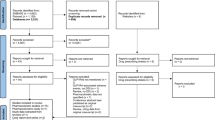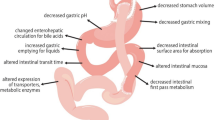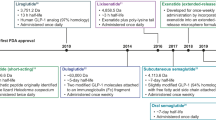Abstract
Purpose
To explore the possibility that age-related changes in physiology may result in differences in drug bioavailability after oral administration of lipid based formulations of danazol.
Methods
Danazol absorption from lipid formulations with increasing drug load was examined in younger (9 months) and older (8 years) beagles. Age related changes to hepatic function were assessed via changes to systemic clearance and serum bile acid concentrations. Changes to lipolytic enzyme activity and intestinal bile salt concentration were evaluated using in vitro lipolysis.
Results
Drug exposure increased linearly with dose in younger animals. In older animals, bioavailability increased with increasing dose to a tipping point, beyond which bioavailability reduced (consistent with initiation of precipitation). No differences in hepatic function were apparent across cohorts. Changes to enzyme concentrations in lipolysis studies had little impact on drug precipitation/solubilisation. In contrast, higher bile salt concentrations better supported supersaturation at higher drug loads.
Conclusions
Differences in animal cohort can have a significant impact on drug absorption from lipid based formulation. For danazol, bioavailability was enhanced under some circumstances in older animals. In vitro experiments suggest that this was unlikely to reflect changes to metabolism or lipolysis, but might be explained by increases in luminal bile salt/phospholipid concentrations in older animals.








Similar content being viewed by others
Abbreviations
- 4-BPB:
-
Bromophenyl boronic acid
- APDISP :
-
Colloidal aqueous phase formed on dispersion of a SEDDS formulation
- APDIGEST :
-
Colloidal aqueous phase formed on digestion of a SEDDS formulation
- AUC:
-
Area under the curve
- BA:
-
Bioavailability
- BS:
-
Bile salt
- Cmax :
-
Peak plasma concentration
- CrEL:
-
Cremophor EL
- CYP:
-
Cytochrome P450
- F :
-
Absolute bioavailability
- GI:
-
Gastrointestinal
- HPLC:
-
High performance liquid chromatography
- HPMC:
-
Hydroxypropyl methylcellulose
- IV:
-
Intravenous
- LBDDS:
-
Lipid-based drug delivery system
- LCMS:
-
Liquid chromatography mass spectrometry
- MC:
-
Medium-chain
- NaTDC:
-
Sodium taurodeoxycholate
- PL:
-
Phospholipid
- PPI:
-
Polymeric precipitation inhibitors
- S:
-
Supersaturation ratio
- SBA:
-
Serum bile acid
- SEDDS:
-
Self-emulsifying drug delivery system
- t1/2 :
-
Half life
- TBU:
-
Tributyrin units
- Tmax :
-
Time of occurrence of peak plasma concentration
- Vdβ :
-
Volume of distribution
References
Yu LX, Amidon GL, Polli JE, Zhao H, Mehta MU, Conner DP, et al. Biopharmaceutics classification system: the scientific basis for biowaiver extensions. Pharm Res. 2002;19:921–5.
Williams HD, Trevaskis NL, Charman SA, Shanker RM, Charman WN, Pouton CW, et al. Strategies to address low drug solubility in discovery and development. Pharmacol Rev. 2013;65:315–499.
O’Driscoll CM, Griffin BT. Biopharmaceutical challenges associated with drugs with low aqueous solubility—the potential impact of lipid-based formulations. Adv Drug Deliv Rev. 2008;60:617–24.
Humberstone AJ, Charman WN. Lipid-based vehicles for the oral delivery of poorly water soluble drugs. Adv Drug Deliv Rev. 1997;25:103–28.
Porter CJH, Pouton CW, Cuine JF, Charman WN. Enhancing intestinal drug solubilisation using lipid-based delivery systems. Adv Drug Deliv Rev. 2008;60:673–91.
Charman SA, Charman WN, Rogge MC, Wilson TD, Dutko FJ, Pouton CW. Self-emulsifying drug delivery systems: formulation and biopharmaceutic evaluation of an investigational lipophilic compound. Pharm Res. 1992;9:87–93.
Porter CJH, Trevaskis NL, Charman WN. Lipids and lipid-based formulations: optimizing the oral delivery of lipophilic drugs. Nature Rev Drug Discov. 2007;6:231–48.
Patton JS, Carey MC. Watching fat digestion. Science. 1979;204:145–8.
Staggers JE, Hernell O, Stafford RJ, Carey MC. Physical-chemical behavior of dietary and biliary lipids during intestinal digestion and absorption. 1. Phase behavior and aggregation states of model lipid systems patterned after aqueous duodenal contents of healthy adult human beings. Biochemistry. 1990;29:2028–40.
Carey MC, Small DM. The characteristics of mixed micellar solutions with particular reference to bile. Am J Med. 1970;49:590–608.
Carey MC, Small DM, Bliss CM. Lipid digestion and absorption. Annu Rev Physiol. 1983;45:651–77.
Gibson L. Lipid-based excipients for oral drug delivery. In: Hauss DJ, editor. Oral lipid-based formulations: Enhancing the bioavailbility of poorly water-soluble drugs, vol. 170. New York: Informa Heathcare; 2007. p. 33–62.
Schick MJE. Nonionic surfactants. New York: Marcel Dekker, Inc; 1977.
Anby MU, Williams HD, McIntosh M, Benameur H, Edwards GA, Pouton CW, et al. Lipid digestion as a trigger for supersaturation: evaluation of the impact of supersaturation stabilisation on the in vitro and in vivo performance of self-emulsifying drug delivery systems. Mol Pharmaceut. 2012;9:2063–79.
Williams HD, Anby MU, Sassene P, Kleberg K, Bakala N’Goma JC, Calderone M, et al. Toward the establishment of standardized in vitro tests for lipid-based formulations, Part 2: The effect of bile salt concentration and drug saturation level (dose) on the performance of Type I, II, IIIA, IIIB and IV formulations during in vitro digestion. Mol Pharmaceut. 2012;9:3286–300.
Cuiné JF, Charman WN, Pouton CW, Edwards GA, Porter CJH. Increasing the proportional content of surfactant (Cremophor EL) relative to lipid in self-emulsifying lipid-based formulations of danazol reduces oral bioavailability in beagle dogs. Pharm Res. 2007;24:748–57.
Erlich L, Yu D, Pallister DA, Levinson RS, Gole DG, Wilkinson PA, et al. Relative bioavailability of danazol in dogs from liquid-filled hard gelatin capsules. Int J Pharm. 1999;179:49–53.
Bakatselou V, Oppenheim RC, Dressman JB. Solubilization and wetting effects of bile salts on the dissolution of steroids. Pharm Res. 1991;8:1461–9.
Khoo S-M, Humberstone AJ, Porter CJH, Edwards GA, Charman WN. Formulation design and bioavailability assessment of lipidic self-emulsifying formulations of halofantrine. Int J Pharm. 1998;167:155–64.
Center SA, Leveille CR, Baldwin BH, Tennant BC. Direct spectrometric determination of serum bile acids in the dog and cat. Am J Vet Res. 1984;45:2043–50.
Center SA, Manwarren T, Slater MR, Wilentz E. Evaluation of 12-hour preprandial and 2-hour post prandial serum bile-acids concentrations for diagnosis of hepatobiliary diseaase in dogs. J Am Vet Med Assoc. 1991;199:217–26.
Dawson PA, Shneider BL, Hofmann AF. Bile formation and the enterohepatic circulation. Physiology of the gastrointestinal tract. 4th ed. Burlington: Academic Press; 2006. p. 1437–62.
Schlesinger DP, Rubin SI. Serum bile acids and the assessment of hepatic function in dogs and cats. Can Vet J. 1993;34:215–20.
Strasser A, NiedermÜLler H, Hofecker G, Laber G. The effect of aging on laboratory values in dogs. J Vet Med A. 1993;40:720–30.
Washizu T, Koizumi I, Kaneko JJ. Postprandial changes in serum bile acids concentration and fractionation of individual bile acid by high performance liquid chromatography in normal dogs. Jpn J Vet Sci. 1987;49:593–600.
Reymond J-P, Sucker H, Vonderscher J. In vivo model for ciclosporin intestinal absorption in lipid vehicles. Pharm Res. 1988;5:677–9.
Charman WN, Rogge MC, Boddy AW, Berger BM. Effect of food and a monoglyceride emulsion formulation on danazol bioavailability. J Clin Pharmacol. 1993;33:381–6.
Jensen AL. Variations in total bile acid concentration in serum of dogs after a test meal. J Vet Med A. 1991;38:241–6.
Dawes LG, Nahrwold DL, Rege RV. Supersaturation of canine gallbladder bile with calcium bilirubinate during formation of pigment gallstones. Am J Surg. 1989;157:82–8.
Rege RV, Moore EW. Pathogenesis of calcium-containing gallstones. Canine ductular bile, but not gallbladder bile, is supersaturated with calcium carbonate. J Clin Invest. 1986;77:21–6.
Kaukonen A, Boyd BJ, Porter CJH, Charman WN. Drug solubilization behavior during in vitro digestion of simple triglyceride lipid solution formulations. Pharm Res. 2004;21:245–53.
Kossena GA, Charman WN, Boyd BJ, Porter CJH. Influence of the intermediate digestion phases of common formulation lipids on the absorption of a poorly water-soluble drug. J Pharm Sci. 2005;94:481.
Porter CJH, Kaukonen AM, Taillardat-Bertschinger A, Boyd BJ, O’Connor JM, Edwards GA, et al. Use of in vitro lipid digestion data to explain the in vivo performance of triglyceride-based oral lipid formulations of poorly water-soluble drugs: studies with halofantrine. J Pharm Sci. 2004;93:1110–21.
Buddington RK, Elnif J, Malo C, Donahoo JB. Activities of gastric, pancreatic, and intestinal brush-border membrane enzymes during postnatal development of dogs. Am J Vet Res. 2003;64:627–34.
Akimoto M, Nagahata N, Furuya A, Fukushima K, Higuchi S, Suwa T. Gastric pH profiles of beagle dogs and their use as an alternative to human testing. Eur J Pharm Biopharm. 2000;49:99–102.
Evans MA, Triggs EJ, Cheung M, Broe GA, Creasey H. Gastric-emptying rate in the elderly—implcations for drug-therapy. J Am Geriatr Soc. 1981;29:201–5.
Wade PR. Aging and neural control of the GI tract - I. Age-related changes in the enteric nervous system. Am J Physiol-Gastroint Liver Physiol. 2002;283:G489–95.
Wiley JW. Aging and neural control of the GI tract - III. Senescent enteric nervous system: lessons from extraintestinal sites and nonmammalian species. Am J Physiol-Gastroint Liver Physiol. 2002;283:G1020–6.
Annaert P, Brouwers J, Bijnens A, Lammert F, Tack J, Augustijns P. Ex vivo permeability experiments in excised rat intestinal tissue and in vitro solubility measurements in aspirated human intestinal fluids support age-dependent oral drug absorption. Eur J Pharm Sci. 2010;39:15–22.
Klotz U. Pharmacokinetics and drug metabolism in the elderly. Drug Metab Rev. 2009;41:67–76.
Wilde PJ, Chu BS. Interfacial & colloidal aspects of lipid digestion. Adv Colloid Interface Sci. 2011;165:14–22.
Katneni K, Charman SA, Porter CJH. Impact of Cremophor-EL and polysorbate-80 on digoxin permeability across rat jejunum: delineation of thermodynamic and transporter related events using the reciprocal permeability approach. J Pharm Sci. 2007;96:280–93.
Yeap YY, Trevaskis NL, and C.J.H. Porter. Lipid Absorption Triggers Drug Supersaturation at the Intestinal Unstirred Water Layer and Promotes Drug Absorption from Mixed Micelles. Pharm Res. 2013;30:3045–58.
Miller JM, Beig A, Krieg BJ, Carr RA, Borchardt TB, Amidon GE, et al. The solubility-permeability interplay: mechanistic modeling and predictive application of the impact of micellar solubilization on intestinal permeation. Mol Pharmaceut. 2011;8:1848–56.
Markopoulos C, Imanidis G, Vertzoni M, Parrott N, Reppas C. In vitro and ex vivo investigation of the impact of luminal lipid phases on passive permeability of lipophilic small molecules using PAMPA. Pharm Res. 2013;30:3145–53.
Davison C, Banks W, Fritz A. The absorption, distribution and metabolic fate of danazol in rats, monkeys and human volunteers. Arch Int Pharmacodyn. 1976;221:294–310.
Lee CA, Neul D, Clouser-Roche A, Dalvie D, Wester MR, Jiang Y, et al. Identification of novel substrates for human cytochrome P450 2J2. Drug Metab Dispos. 2010;38:347–56.
Editorial. serum bile acids in hepatobiliary disease. The Lancet. 1982;320:1136–1138.
Parraga M, Kaneko J. Total serum bile acids and the bile acid profile as tests of liver function. Vet Res Commun. 1985;9:79–88.
Uchida K, Nomura Y, Kadowaki M, Takase H, Takano K, Takeuchi N. Age-related changes in cholesterol and bile acid metabolism in rats. J Lipid Res. 1978;19:544–52.
Benno Y, Nakao H, Uchida K, Mitsuoka T. Impact of the advances in age on the gastrointestinal microflora of beagle dogs. J Vet Med Sci. 1992;54:703–6.
Cusack BJ. Pharmacokinetics in older persons. Am J Geriatr Pharmacother. 2004;2:274–302.
Fahey GC, Barry KA, Swanson KS. Age-related changes in nutrient utilization by companion animals. Annu Rev Nutr. 2008;28:425–45.
McLean AJ, Le Couteur DG. Aging biology and geriatric clinical pharmacology. Pharmacol Rev. 2004;56:163–84.
Saltzman JR, Kowdley KV, Perrone G, Russell RM. Changes in small-intestine permeability with aging. J Am Geriatr Soc. 1995;43:160–4.
Yuasa H, Soga N, Kimura Y, Watanabe J. Effect of aging on the intestinal transport of hydrophilic drugs in the rat small intestine. Biol Pharm Bull. 1997;20:1188–92.
Carriere F, Barrowman JA, Verger R, Laugier R. Secretion and contribution to lipolysis of gastric and pancreatic lipases during a test meal in humans. Gastroenterology. 1993;105:876–88.
Carriére F, Laugier R, Barrowman JA, Douchet I, Priymenko N, Verger R. Gastric and pancreatic lipase levels during a test meal in dogs. Scand J Gastroenterol. 1993;28:443–54.
Armand M, Borel P, Pasquier B, Dubois C, Senft M, Andre M, et al. Physicochemical characteristics of emulsions during fat digestion in human stomach and duodenum. Am J Physiol Gastrointest Liver Physiol. 1996;271:G172–83.
Swanson KS, Kuzmuk KN, Schook LB, Fahey GC. Diet affects nutrient digestibility, hematology, and serum chemistry of senior and weanling dogs. J Anim Sci. 2004;82:1713–24.
Le Couteur DG, McLean AJ. The aging liver: drug clearance and an oxygen diffusion barrier hypothesis. Clin Pharmacokinet. 1998;34:359–73.
Woodhouse KW, Mutch E, Williams FM, Rawlins MD, James IFW. The effect of age on pathways of drug metabolism in human liver. Age Ageing. 1984;13:328–34.
Acknowledgments and Disclosures
Funding support from the Australian Research Council (ARC) and Capsugel is gratefully acknowledged. We also thank Anya Carlson, Gail Squires, Dr. Tri-Hung Nguyen and Dr. Linda Abraham for their assistance with bioavailability studies and sample collection.
Author information
Authors and Affiliations
Corresponding author
Electronic supplementary material
Below is the link to the electronic supplementary material.
ESM 1
(DOCX 79 kb)
Rights and permissions
About this article
Cite this article
Anby, M.U., Williams, H.D., Feeney, O. et al. Non-linear Increases in Danazol Exposure with Dose in Older vs. Younger Beagle Dogs: The Potential Role of Differences in Bile Salt Concentration, Thermodynamic Activity, and Formulation Digestion. Pharm Res 31, 1536–1552 (2014). https://doi.org/10.1007/s11095-013-1260-8
Received:
Accepted:
Published:
Issue Date:
DOI: https://doi.org/10.1007/s11095-013-1260-8




